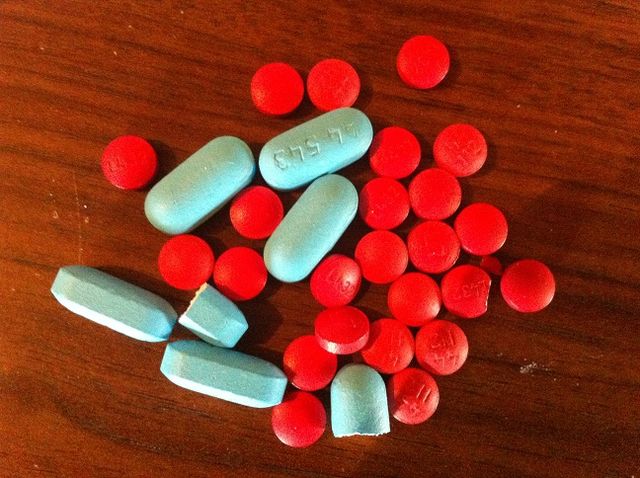Uncategorized
Revisiting New Jersey’s Response to the Opioid Crisis

Fentanyl is an extremely potent synthetic opioid used to treat severe pain. While legally administered in many advanced medical cases, the illicit trade and consumption of the opioid cannot be overlooked. In New Jersey, fentanyl was found in the bodies of 2,248 people in 2019, equalling 75% of drug deaths in the state.
In light of this, New Jersey has seen a major uptick in the use of naloxone, a medication approved by the Food and Drug Administration which reverses overdoses. Naloxone was used 15,452 times in 2022, compared to 7,223 times in 2015. Most recently, Narcan– naloxone produced by the medical firm Emergent BioSolutions– was made available through purchase over the counter (OTC) in New Jersey in March 2023. Additionally, New Jersey legislation has made Narcan available in public locations such as libraries and higher education institutions. These are steps in the right direction when addressing overdoses. New Jersey will also receive around $1 billion in opioid settlement funds over the next 18 years. The Murphy Administration has taken the public’s feedback into account on how to use these funds, which will be used to support people in treatment and recovery among other things. However, there are still many questions to be addressed regarding the use of these funds and the opioid epidemic moving forward.
The Department of Human Services in New Jersey has committed to making naloxone free for anyone seeking the drug at any time. Since 2018, Human Services has distributed about 186,000 two-dose naloxone kits throughout the state, including 54,000 kits in 2022. However, will this be sustainable? At the moment, the price of naloxone OTC ranges from $38 to $123.30 depending on the pharmacy from which it is purchased. Such prices may not be sustainable for the consumer nor the state. Therefore, using the opioid settlement funds to subsidize and encourage more competition in the naloxone market may be a viable solution, as with more competition comes friendlier prices for consumers looking to purchase naloxone OTC.
On another note, Camden, New Jersey, has applied the use of naloxone to combat the fentanyl crisis in the city. However, officials noted that every overdose patient they have helped treat has a one in ten chance of dying in the next year. While naloxone can save someone from an overdose, it does not guarantee that they will stop using opioids. With that, Camden has begun using buprenorphine to further their efforts against the crisis. Buprenorphine is a medication used to treat opioid withdrawal symptoms and stabilize patients further. Treating withdrawal symptoms is pivotal as opioids have exceptionally high relapse rates. Working to further incorporate buprenorphine into state policy such that it is more accessible can help curb the withdrawal symptoms of opioids. The integration of buprenorphine can begin with the opioid settlement funds, and its accessibility must be emphasized as much as that of naloxone. Most importantly, it is critical that state policymakers are in direct communication with the first responders and treatment centers so that the policies in New Jersey are able to best support both those fighting and facing the opioid crisis.
The author is a member of GSI’s Summer Inernship program and is a student at Drew University. He is a resident of New Brunswick , New Jersey.

Sources and Related Materials
NJ Office of the Chief State Medical Examiner
New Jersey county uses innovative program to treat and prevent drug overdoses – CBS News
Opioid Settlement Funds (nj.gov)
- Fentanyl/narcan
- 1) Nearly 75% of the 91,799 drug overdose deaths in 2020 involved an opioid
- In 2020, more than 56,000 deaths involving synthetic opioids (fentanyl)(other than methadone) occurred in the United States, which is more deaths than from any other type of opioid.
- Through 2017-2023– 76,451 narcan incidents
- In 2019, fentanyl was found in the bodies of 2,248 people, equaling 75% of drug deaths in the state of New Jersey
- In 2020, more than 56,000 deaths involving synthetic opioids (fentanyl)(other than methadone) occurred in the United States, which is more deaths than from any other type of opioid.
- 3) Narcan has the capacity to reverse an overdose
- Accessible in all states without a prescription needed
- Pennsylvania spends ~$5 million a year on this
- Narcan (Naloxone) by Emergent BioSolutions– over $1 billion in revenue since 2018 to 2022
- NJ: The drug was used 7,223 times in 2015, compared to 15,452 in 2022, the most recent year data is available
- Pennsylvania spends ~$5 million a year on this
- Insurance typically does not cover OTC
- ☆ Opioid settlement funds to be put toward subsidizing/tax credits for the OTC market and encouraging competition
- Bill could be written on this
- Sure, there is free naloxone in NJ– prices will be hard to sustain– will be difficult to cover indefinitely– more competitors can deflate prices as well as potential public/private partnerships
- Murphy has made it free many times, will this be sustainable?
- Accessible in all states without a prescription needed
- 4) NJ Legislation
- Narcan in libraries, higher ed,
- NJ will be receiving about $1 billion of opioid settlement funds over the next 18 years
- Receiving public input on how it should be used
- “Opioid Prevention and Rehabilitation Program Fund,” which would support programs that provide treatment for individuals who are uninsured, underinsured, or enrolled in the Medicaid program.
- The fund would be supported by a tax on the first wholesale distribution of an opioid drug in this State at the rate of one cent per milligram of active opioid ingredient.
- 2) The economic cost of drug abuse in the United States was estimated at $193 billion in 2007 the last available estimate. This value includes
- $120 billion in lost productivity, mainly due to labor participation costs, participation in drug abuse treatment, incarceration, and premature death
- $11 billion in healthcare costs – for drug treatment and drug‐related medical consequences; and
- $61 billion in criminal justice costs, primarily due to criminal investigation, prosecution and incarceration, and victim costs
- 1) Nearly 75% of the 91,799 drug overdose deaths in 2020 involved an opioid
